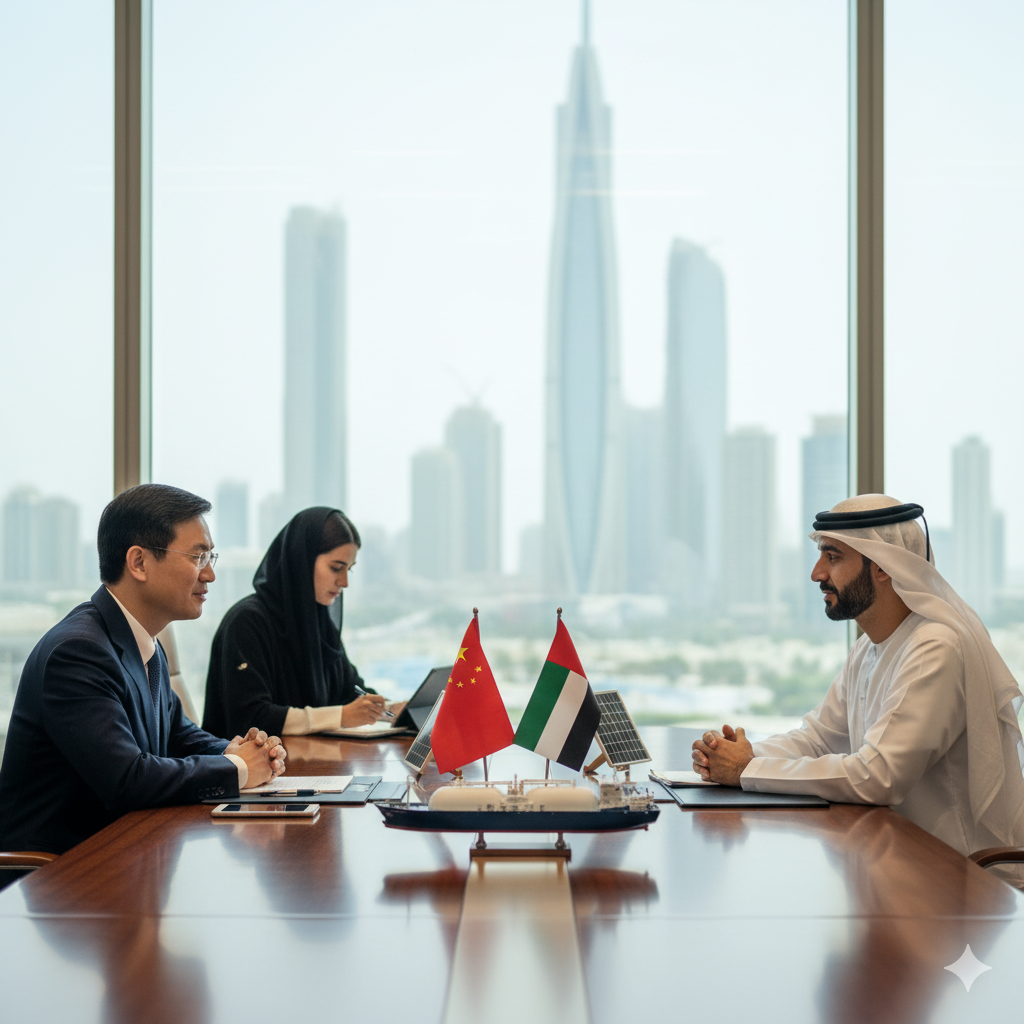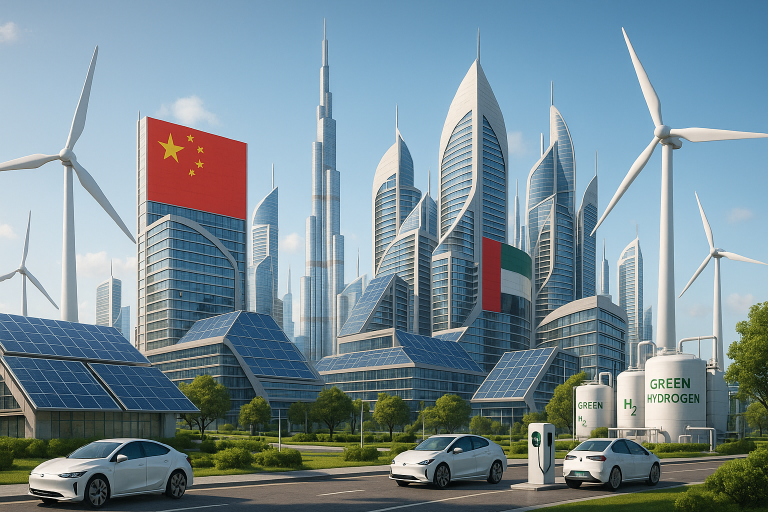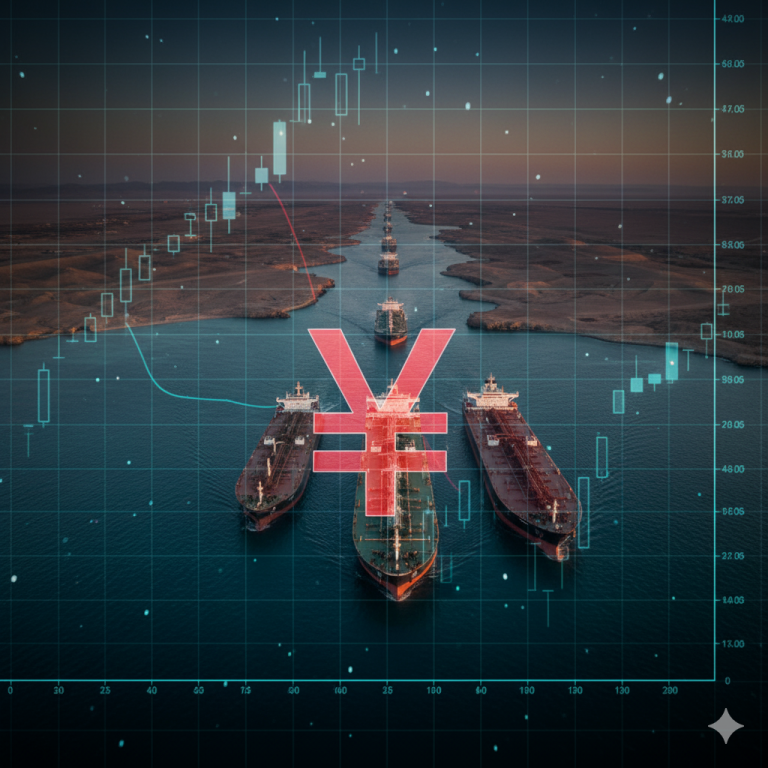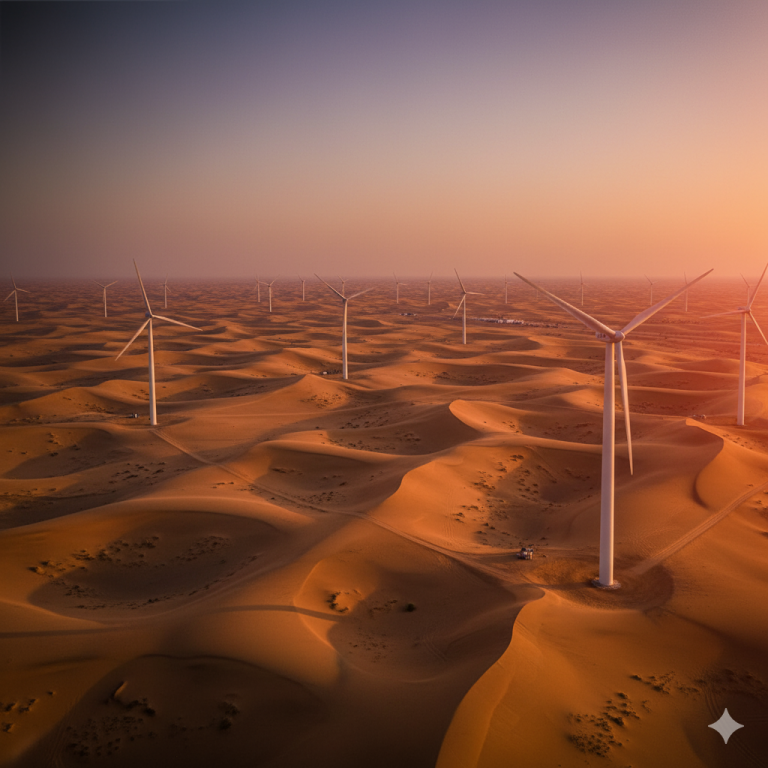A Model for the World: Lessons from the China-UAE Energy Partnership
In an era marked by shifting geopolitical landscapes and an urgent global imperative for sustainable development, the energy partnership between China and the United Arab Emirates (UAE) stands as a compelling testament to the power of strategic collaboration. Far from a mere transactional relationship, this alliance has evolved into a multifaceted model of cooperation, demonstrating how nations with diverse economic structures and long-term visions can forge a mutually beneficial path forward. This article delves into the historical underpinnings, industrial intricacies, and promising future trajectory of this remarkable partnership, highlighting its positive impact and offering valuable lessons for global energy diplomacy.
A Deep-Rooted History: From Ancient Silk Roads to Modern Strategic Alliances
The relationship between China and the UAE is not a recent phenomenon but rather one deeply rooted in centuries of exchange. Tracing its origins back to the ancient Silk Road, this historical conduit facilitated not only the flow of goods but also the vibrant exchange of ideas, cultures, and innovations across vast distances. This foundational connection laid the groundwork for a modern partnership that would blossom into a comprehensive strategic alliance.
Formal diplomatic ties were established in 1984, marking the beginning of a new chapter. A pivotal moment arrived in 1990 when Sheikh Zayed bin Sultan Al Nahyan, the UAE’s revered Founding Father, made a landmark visit to China. This historic trip, the first by a head of state from a Gulf Cooperation Council (GCC) nation, set a powerful precedent for deepening bilateral relations. Over the subsequent four decades, this foresight has yielded an impressive array of collaborations, evidenced by the signing of over 130 bilateral agreements and Memoranda of Understanding (MoUs) [1].
The contemporary manifestation of this historical bond is particularly evident in the UAE’s enthusiastic participation in China’s Belt and Road Initiative (BRI). This ambitious global development strategy, often referred to as the modern Silk Road, has further strengthened economic partnerships, fostered new linkages, and cultivated collaboration across borders and cultures. The synergy between the UAE’s strategic location and China’s expansive infrastructure vision has created a powerful engine for regional and global connectivity.
Recent high-level engagements underscore the enduring vitality of this partnership. During a state visit by H.H Sheikh Mohamed bin Zayed to China, a further 19 agreements and MoUs were inked. These agreements spanned critical sectors including tourism, industry, technology, media, and the Belt and Road Initiative, signaling a mutual commitment to expanding collaborative efforts across diverse strategic areas [1]. The economic dividends of these flourishing ties are substantial. In 2023, non-oil trade between the two nations surged by 12%, reaching an impressive US$80.6 billion. Investment flows have been equally robust, with the UAE investing US$11.4 billion in China between 2003 and 2022 across sectors such as real estate, financial services, green energy, and transportation. Concurrently, Chinese investment in the UAE stood at US$6.9 billion during the same period, highlighting the reciprocal and balanced nature of their economic engagement [1].
This historical trajectory reveals a relationship built on mutual respect, shared interests, and a forward-looking vision, setting the stage for an energy partnership that is both robust and adaptable to be continued.
Industrial Synergy: A Blueprint for Energy Cooperation
The industrial dimension of the China-UAE energy partnership showcases a sophisticated model of collaboration that extends beyond mere resource exchange. It is characterized by strategic investments, technological transfers, and joint ventures that span the entire energy value chain, from upstream exploration and production to downstream refining, petrochemicals, and new energy development.
A cornerstone of this industrial synergy is the long-standing partnership between China National Petroleum Corp (CNPC) and Abu Dhabi National Oil Co (ADNOC). This collaboration gained significant momentum in 2012 when the UAE became the first Gulf country to establish a strategic partnership with China. The alignment of China’s Belt and Road Initiative with the UAE’s energy interconnection goals in 2013 further solidified this bond. A key outcome was the Al Yasat project agreement, which saw CNPC becoming a strategic partner in Abu Dhabi’s vital energy assets [2].
This partnership deepened considerably in 2017 with CNPC’s appointment as the asset leader for the North-East Bab fields, significantly enhancing their strategic collaboration in onshore oil concessions. The elevation of bilateral relations to a comprehensive strategic partnership in 2018 paved the way for further agreements, including CNPC and ADNOC’s cooperation in the Umm Shaif & Nasr and Lower Zakum offshore fields. This established a truly comprehensive framework covering both onshore and offshore operations and integrating the entire exploration and development industry chain [2].
More recently, in May 2024, the governments of China and the UAE issued a joint statement emphasizing strengthened cooperation in renewable energy, oil, and natural gas. This was swiftly followed by a strategic cooperation agreement between CNPC and ADNOC, encompassing the full spectrum of the oil and gas industry. This includes exploration, research, technology exchange, engineering services, refining, petrochemicals, market sales, international gas project cooperation, and new energy collaboration, signifying a profound strategic alignment [2].
CNPC’s contributions highlight the practical benefits of this industrial collaboration. Leveraging its technological advantages in low-permeability carbonate reservoirs, CNPC has been instrumental in boosting production and reducing costs in fields like North-East Bab. The two companies have also engaged in sustained collaboration in cutting-edge areas such such as reservoir simulation, drilling acceleration, and smart oilfields. Notably, the
“Broadband, Wide-Azimuth, High-Density” seismic exploration technology provides crucial technical support for ADNOC’s efforts to increase production from mature oil fields and develop new resources [2].
Beyond exploration and production, the partnership extends to engineering construction, with projects like the BAB-Buhasa AiP5 off-plot, LNG Transmission Pipeline, and Project Swing significantly enhancing ADNOC’s capacity and operational efficiency. CNPC’s high-quality and efficient drilling services have also contributed to reducing ADNOC’s development costs. In the equipment sector, CNPC’s hybrid drilling rigs exemplify a commitment to sustainability, reducing fuel consumption and emissions through intelligent remote monitoring and dispatching [2].
The collaboration also encompasses oil and gas trade, with CNPC actively participating in the trade of crude oil, natural gas, refined oil, and chemicals, and holding a significant stake as the sole Chinese shareholder in the Abu Dhabi Futures Exchange. Furthermore, talent development is a key aspect, with exchange programs fostering technical and management expertise, and CNPC supporting the UAE’s Emiratization policy by promoting local talent recruitment and cultivation [2].
Social responsibility is not overlooked, as CNPC promotes Chinese language education in the UAE and explores green development pathways in energy exploration. PetroChina’s commitment to the Oil and Gas Decarbonization Charter at COP28 further underscores the partnership’s dedication to environmental stewardship [2]. This comprehensive industrial engagement illustrates a model where technological prowess, strategic investment, and shared developmental goals converge to create a robust and sustainable energy ecosystem.
The Future Trajectory: Green Energy and Global Leadership
The future of the China-UAE energy partnership is increasingly defined by a shared vision for green energy and sustainable development. Both nations recognize the imperative to transition towards cleaner energy sources, not only to address climate change but also to foster economic diversification and long-term prosperity. This alignment has positioned their collaboration as a leading example of international cooperation in the global energy transition.
The UAE-China green energy collaboration is a transformative partnership driving the adoption of clean technology, economic diversification, and sustainable growth across the Middle East and Asia. This alliance has become a central force in shaping global renewable energy strategies, fostering cross-border investment, and creating new opportunities for businesses participating in the green energy revolution [3].
This journey began in earnest in 2018, with both countries aligning their ambitions for climate action and economic growth through sustainable technology. The UAE has demonstrated a strong commitment, evidenced by a 21% increase in renewable energy capacity between 2021 and 2023, and a substantial $1.2 billion investment in new solar projects. China, a global leader in green tech exports, complements this with advanced expertise and large-scale manufacturing capabilities. The critical role of such international partnerships in achieving global climate goals is widely recognized [3].
Cross-border green investments between Asia and the Middle East expanded by a remarkable 35% from 2022 to 2023. This growth has also spurred workforce development, with the UAE experiencing a 15% rise in demand for renewable energy professionals in the past year [3].
Landmark projects underscore the success of this partnership. The Noor Abu Dhabi project, currently the world’s largest single-site solar installation, producing 1.2 GW of electricity, stands as a powerful symbol of UAE-China cooperation. In 2022, the UAE invested over $2.4 billion in renewables, with China’s participation steadily increasing. Joint projects have already led to a 17% reduction in regional carbon emissions in 2023, and the partnership is recognized as a key driver of both regional and global sustainability [3].
The impact of these green energy projects is evident in both environmental and economic terms. The UAE’s renewable capacity grew by 40% from 2022 to 2024, largely due to these joint efforts, contributing significantly to the UAE’s Net Zero by 2050 pledge. The Ministry of Climate Change and Environment reports a 15% decline in energy sector emissions since 2022 [3]. Beyond environmental gains, this cooperation has created over 10,000 green jobs in the UAE in the past 18 months and accelerated innovation in smart grid systems and solar advancements [3].
Looking ahead, the future of green energy between the UAE and China is poised for continued expansion. In 2023, new deals for solar and hydrogen projects were signed, targeting a 30% boost in renewable capacity by 2027. The International Energy Agency reports that global renewable electricity capacity rose 50% in 2023, the fastest in two decades, highlighting the global significance of such partnerships. Middle Eastern green energy investments are projected to exceed $150 billion by 2025, with international collaborations like the UAE-China partnership being vital to achieving global net-zero targets [3].
Conclusion: A Model for Global Energy Transition
The China-UAE energy partnership, spanning historical ties, robust industrial collaboration, and a forward-looking commitment to green energy, offers a compelling model for the world. It demonstrates that strategic alliances, built on mutual respect and shared economic and environmental objectives, can transcend traditional geopolitical divides to foster sustainable development and global prosperity. As the world grapples with the complexities of energy security and climate change, the lessons from this dynamic partnership provide a beacon of hope and a practical blueprint for a more interconnected and sustainable future.
References
[1] WAM.ae. (2024, June 3). 40 Years of UAE & China: Towards Global Cooperation & Economic Growth. Retrieved from https://www.wam.ae/en/article/13y4lco-years-uae-china-towards-global-cooperation
[2] HAO NAN. (2025, September 1). CNPC’s high-quality development in the UAE. China Daily. Retrieved from https://www.chinadaily.com.cn/a/202509/01/WS68b51611a3108622abc9e331.html
[3] HROne. (2025, August 19). What is the UAE-China Green Energy Collaboration? Discover the Transformative Impact. Retrieved from https://hrone.com/blog/what-is-the-uae-china-green-energy-collaboration-discover-the-transformative-impact/







